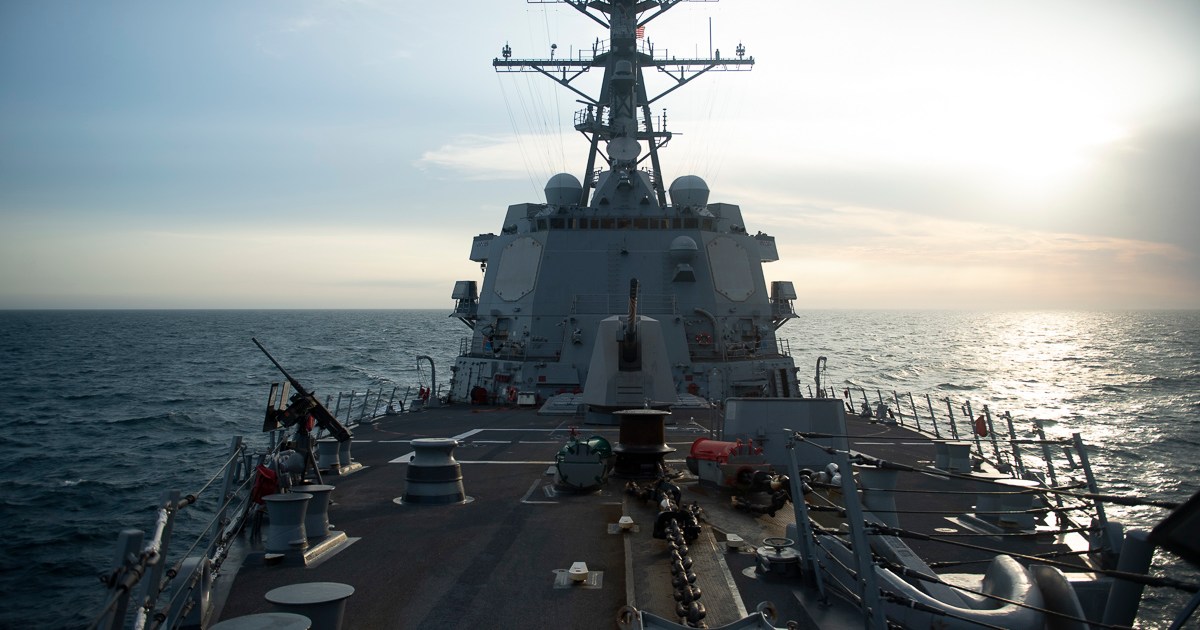**US Campaign Against “Narcoterrorists” Turns Caribbean Into New Battlefield**
United States President Donald Trump’s campaign against “narcoterrorists” has transformed the Caribbean into a new battlefield. Since August, Washington has deployed thousands of troops, warships, and aircraft across the region, reopened military bases in Puerto Rico, and conducted drills. Analysts describe this as the largest US military presence in Latin America in decades.
In September, the US began a series of strikes on Venezuelan boats it claims were trafficking drugs into the US. The latest attack on Friday resulted in the deaths of six people on board. Last week, Trump announced that he had authorized covert CIA operations in Venezuela and was even considering a land attack. However, on Thursday, Trump denied that these actions amount to a declaration of war on Venezuela.
“Well, I don’t think we’re going to necessarily ask for a declaration of war,” he said. “I think we’re just going to kill people that are bringing drugs into our country. OK? We’re going to kill them,” Trump added.
### How Many Venezuelan Boats Has the US Attacked?
The US military has carried out at least ten deadly strikes on vessels off Venezuela’s coast and in the Caribbean Sea and the Pacific Ocean since September 2. This marks the most intense American military activity in Latin America since the US invasion of Panama in 1989. The operations, conducted under the authority of the US Southern Command (SOUTHCOM), include the deployment of a nuclear-powered fast attack submarine. This submarine provides capabilities for strikes, anti-ship and anti-submarine operations, as well as intelligence, reconnaissance, and special operations. Several noncombatant support ships and the US Coast Guard are also part of the deployment.
### Air Assets Deployed
The air component deployed under SOUTHCOM includes some of the most advanced aircraft from the US Navy, Marine Corps, and Air Force. According to Gatopoulos, these deployments have included intimidation tactics such as flying strategic bombers close to Venezuelan airspace.
The B-52 bomber is designed to destroy land-based targets from some distance, usually using long-range cruise missiles. These heavy bombers can fly at altitudes of up to 50,000 feet (15,000 meters) and carry cruise missiles or nuclear-capable weapons. They also support naval operations by monitoring the ocean, targeting ships, and laying mines.
“The B-1 strategic bomber is designed to penetrate enemy airspace to deliver 37 tonnes of ordnance onto its target. Neither jet is in any way useful for stopping drug-smuggling,” Gatopoulos states. “This, plus President Trump’s public announcement to the CIA to start operations within Venezuela, tells me they have something very different in mind—namely to destabilize the Maduro government.”
The recent deployment of the Gerald Ford Carrier Strike Group to the Caribbean further supports this idea. This carrier group is immensely powerful, bringing with it more than 75 fighter jets, helicopters, and early warning aircraft. The USS Gerald R. Ford will be accompanied by three missile destroyers, each capable of attacking targets deep within Venezuela, providing a significant amount of firepower.
There are also at least 10 F-35 stealth fighters—highly versatile jets capable of striking, fighting, and gathering intelligence while remaining hard to detect by radar. MQ-9 Reaper drones, which are remotely piloted aircraft used for surveillance and precision strikes, have also been deployed. These drones have a range of 1,851km (1,150 miles), can reach speeds up to 370km/h (230mph), and carry up to 16 Hellfire missiles, allowing them to engage multiple targets in a single mission.
CH-53E Super Stallions—heavy-lift helicopters—are used to move troops and equipment from ship to shore. They can carry 16 tonnes of cargo up to 80 km (50 miles) before returning to base. Additional air assets include P-8 Poseidon patrol aircraft, MH-60 Seahawk helicopters, AC-130J gunships, and various support and reconnaissance aircraft.
### Special Forces and Troops
SOUTHCOM’s special operations component features MH-60 Black Hawk and AH/MH-6 Little Bird helicopters for troop insertion and reconnaissance. The MC Ocean Trader acts as a mobile forward base for these units. Around 10,000 troops have been deployed to the US territory of Puerto Rico, while the White House has authorized the CIA to carry out covert operations inside Venezuela.
### How Has Venezuela Responded?
On September 4, two Venezuelan F-16 fighter jets flew over the USS Jason Dunham in what Washington described as a highly provocative act. In response, the US deployed 10 F-35B fighters and two MQ-9 Reapers to Puerto Rico.
On September 17, Venezuela launched large-scale naval and air exercises. President Nicolás Maduro ordered the mobilization of the Bolivarian militia—a reserve force within Venezuela’s armed forces, the Bolivarian National Armed Forces (FANB)—and called for millions of volunteers to defend the country’s sovereignty.
While President Trump insists that US operations in the Caribbean Sea are lawful counter-narcotics missions, Venezuelan officials regard these actions as escalations of tension and violations of international law. Venezuela maintains there has been no evidence that targeted vessels posed any imminent threat.
https://www.aljazeera.com/news/2025/10/25/what-military-force-has-the-us-positioned-off-venezuelas-coast?traffic_source=rss
